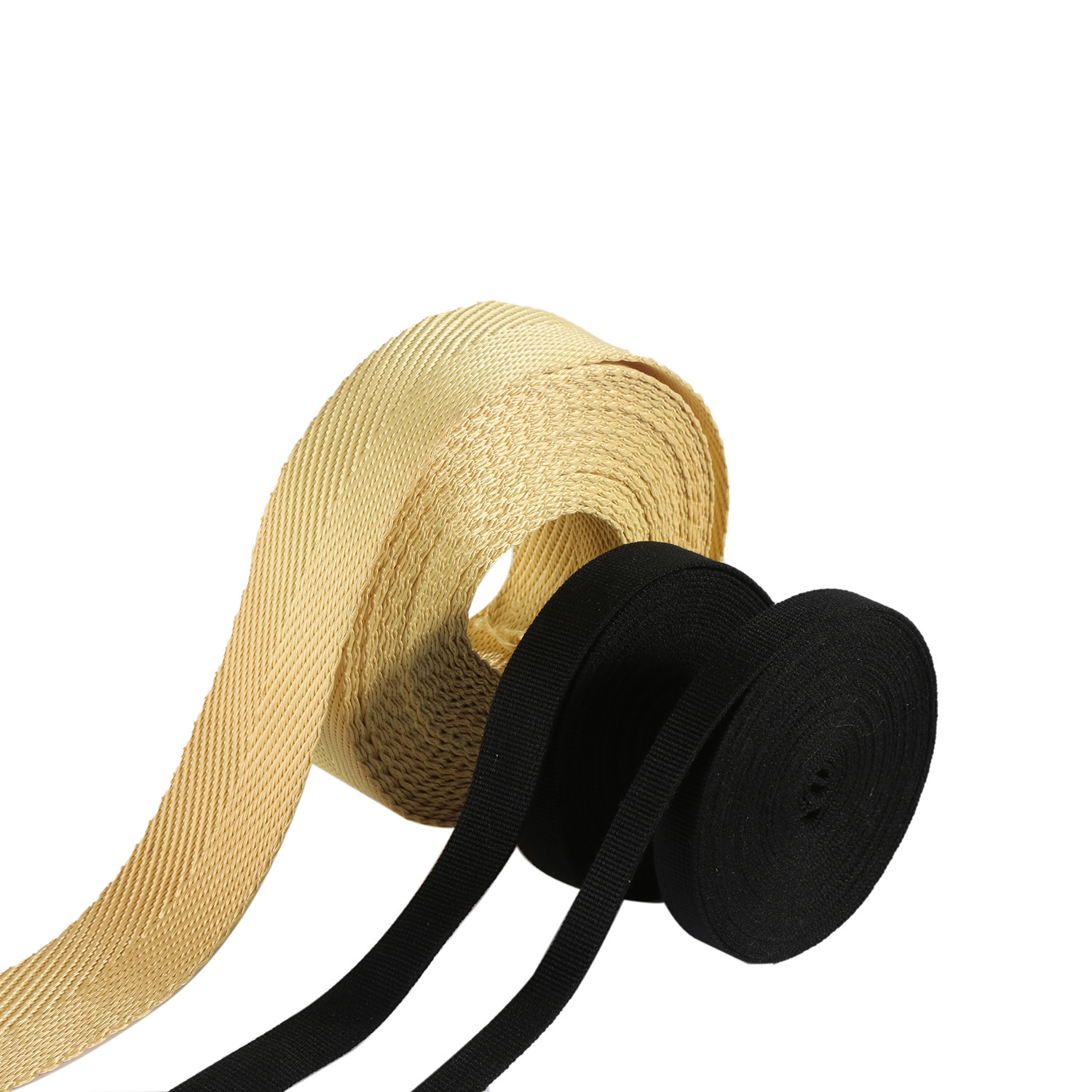How to Properly Care for and Maintain Fireproof Webbing: A Comprehensive Guide
Oct 24,2025

How to Properly Care for and Maintain Fireproof Webbing: A Comprehensive Guide
Table of Contents
- Understanding Fireproof Webbing
- The Importance of Maintaining Fireproof Webbing
- Effective Cleaning Techniques for Fireproof Webbing
- Proper Drying and Storage Methods
- Repairing Fireproof Webbing: What You Need to Know
- How to Inspect Fireproof Webbing for Damage
- Industry Standards for Fireproof Webbing
- Frequently Asked Questions
- Conclusion
Understanding Fireproof Webbing
Fireproof webbing is a specialized fabric designed to withstand high temperatures and flames, making it crucial in various industries such as firefighting, aerospace, and manufacturing. Constructed from materials like Kevlar and other synthetic fibers, this webbing is used for harnesses, straps, and other critical applications where safety is paramount. Understanding its composition and capabilities is the first step towards effective maintenance.
The Importance of Maintaining Fireproof Webbing
Regular maintenance of fireproof webbing is essential for ensuring the safety and effectiveness of the gear. Over time, exposure to heat, moisture, dirt, and chemicals can weaken the fibers and diminish their fire-resistant properties. Proper care not only prolongs the lifespan of the webbing but also guarantees optimal performance in critical situations. Neglecting maintenance can lead to catastrophic failures, putting lives at risk.
Enhancing Safety and Performance
Maintaining fireproof webbing enhances safety by ensuring that it meets industry standards. Regular upkeep helps identify potential weaknesses or damage, allowing for timely repairs or replacements. In high-risk environments, where the stakes are high, the reliability of your equipment is non-negotiable.
Effective Cleaning Techniques for Fireproof Webbing
Cleaning your fireproof webbing is a crucial step in maintenance. However, it’s important to choose the right cleaning methods to preserve the webbing’s properties.
Hand Washing
For routine cleaning, hand washing is often the safest method. Use warm water and a mild detergent specifically designed for synthetic fabrics. Avoid bleach or harsh chemicals as they can damage the fibers.
- Fill a basin with warm water and add the recommended amount of detergent.
- Submerge the fireproof webbing and gently scrub with a soft brush to remove dirt and stains.
- Rinse thoroughly to remove all soap residue.
Machine Washing
If you opt for machine washing, ensure you use a gentle cycle with cold water. Place the webbing in a mesh laundry bag to prevent tangling or snagging during the wash.
- Set the machine to a gentle cycle with cold water.
- Use a mild detergent and avoid fabric softeners.
- After the wash, hang to air dry.
Proper Drying and Storage Methods
How you dry and store your fireproof webbing significantly impacts its longevity. Improper methods can lead to mold growth or degradation of the fibers.
Drying Techniques
After cleaning, it's vital to dry fireproof webbing correctly:
- **Air Drying**: Always air dry fireproof webbing by hanging it in a well-ventilated area away from direct sunlight. This prevents heat exposure that can compromise the webbing.
- **Avoid Heat Sources**: Never use a dryer or place the webbing near heaters or stoves, as excessive heat can damage the material.
Storage Best Practices
Storing fireproof webbing properly is just as important as cleaning it. Consider the following tips:
- Store in a cool, dry place away from direct sunlight.
- Keep it in a breathable bag or container to prevent moisture buildup.
- Avoid folding the webbing tightly; instead, roll it loosely to maintain its integrity.
Repairing Fireproof Webbing: What You Need to Know
In the event of minor damage, repairing fireproof webbing can be a viable option. However, not all damages are repairable, and it’s essential to know when to replace the webbing altogether.
Identifying Repairable Damage
Small frays or minor tears can often be repaired:
- **Sewing**: Use fire-resistant thread to sew small frays or seams. Ensure that the stitches are tight and secure.
- **Patching**: For larger damaged areas, consider using a fire-resistant patch. Apply adhesive designed for high temperatures.
When to Replace Fireproof Webbing
If the fireproof webbing shows significant wear, such as deep cuts, major tears, or discoloration, it’s best to replace it. Continuing to use compromised webbing can jeopardize safety.
How to Inspect Fireproof Webbing for Damage
Regular inspections are crucial for ensuring the reliability of your fireproof webbing. Here are some key steps to follow:
Visual Inspection
Before each use, conduct a thorough visual inspection:
- Look for signs of fraying, cuts, or discoloration.
- Check for any signs of chemical exposure, such as stiffness or brittleness.
Functional Testing
After visual inspections, perform functional tests:
- Gently tug on the webbing to check its strength.
- If using harnesses, ensure they fit correctly and support weight without slipping.
Industry Standards for Fireproof Webbing
Adhering to industry standards for fireproof webbing is crucial for safety and compliance. Different industries may have specific requirements, but general standards include:
- **NFPA Standards**: The National Fire Protection Association outlines standards for fire-resistant materials used in firefighting.
- **ISO Standards**: The International Organization for Standardization provides guidelines for various materials, including their fire-retardant properties.
Frequently Asked Questions
1. How often should I clean my fireproof webbing?
Cleaning should occur after each use, especially if the webbing has been exposed to contaminants or high heat. More frequent cleaning may be necessary in harsher environments.
2. Can I use fabric softener when washing fireproof webbing?
No, fabric softeners can leave residues that compromise the fireproof properties of the webbing. Always use mild detergents designed for synthetic materials.
3. What is the lifespan of fireproof webbing?
The lifespan varies based on usage and care but typically ranges from 3 to 10 years. Regular inspections and maintenance can prolong its life.
4. Is it safe to repair fireproof webbing?
Minor repairs can be safe if done correctly, but always assess the damage. For significant issues, replacing the webbing is recommended.
5. Where can I find fireproof webbing that meets industry standards?
Reputable suppliers and manufacturers specializing in safety equipment will provide fireproof webbing that adheres to industry standards. Always check for certification labels.
Conclusion
Caring for and maintaining fireproof webbing is essential for ensuring its longevity and effectiveness. By following the guidelines outlined in this article, from cleaning and drying to inspecting and repairing, you can help maintain the safety and reliability of your fireproof gear. Remember that proper care not only enhances performance but also significantly contributes to safety in high-risk situations. Investing time and effort into maintenance will pay off in the long run, keeping you and your team safe.
PREVIOUS:
Related Posts
Contact Us
E-mail:
Phone/WeChat:
Factory Address:
No. 601 ShiXing Road, Jimei District, Xiamen, 361024, China







